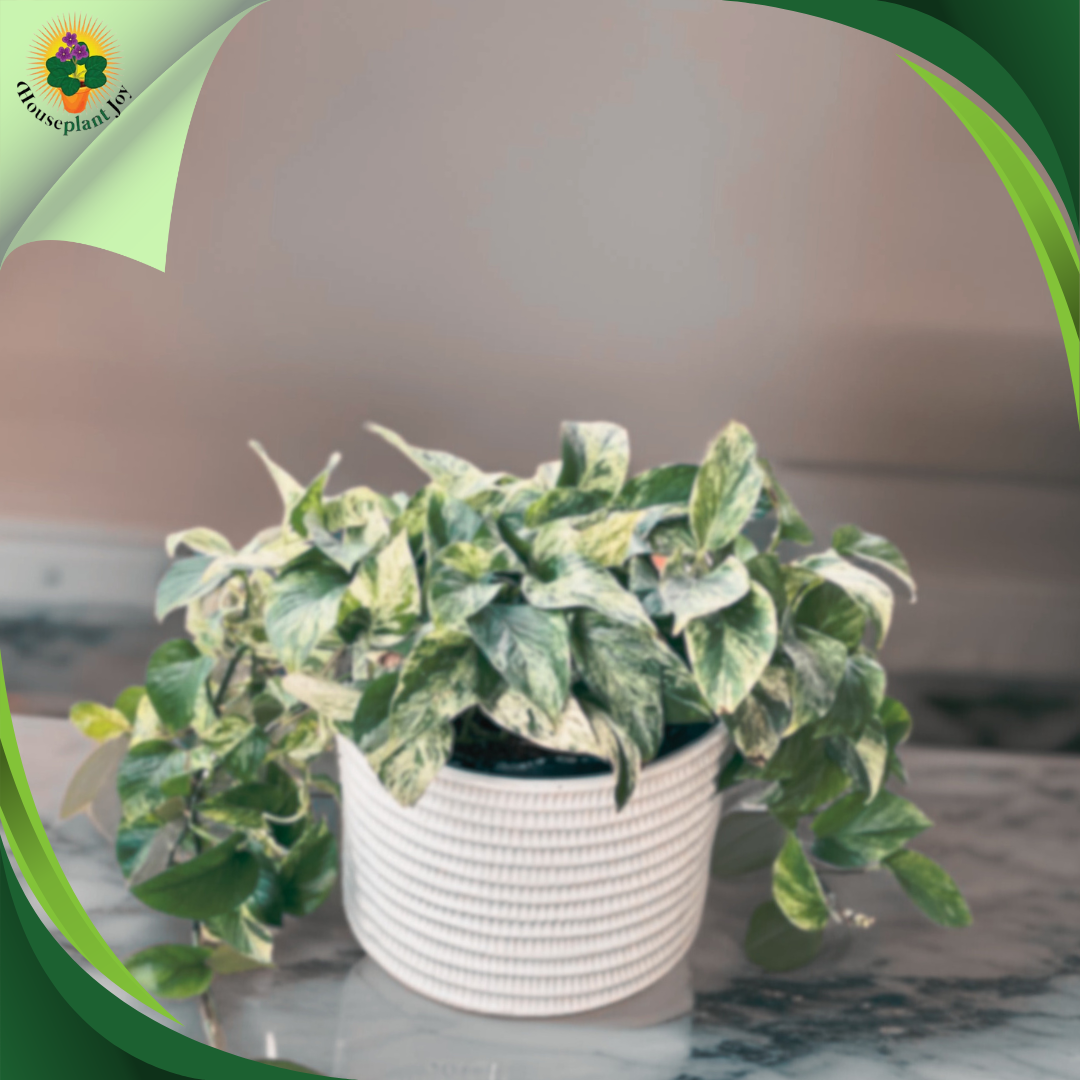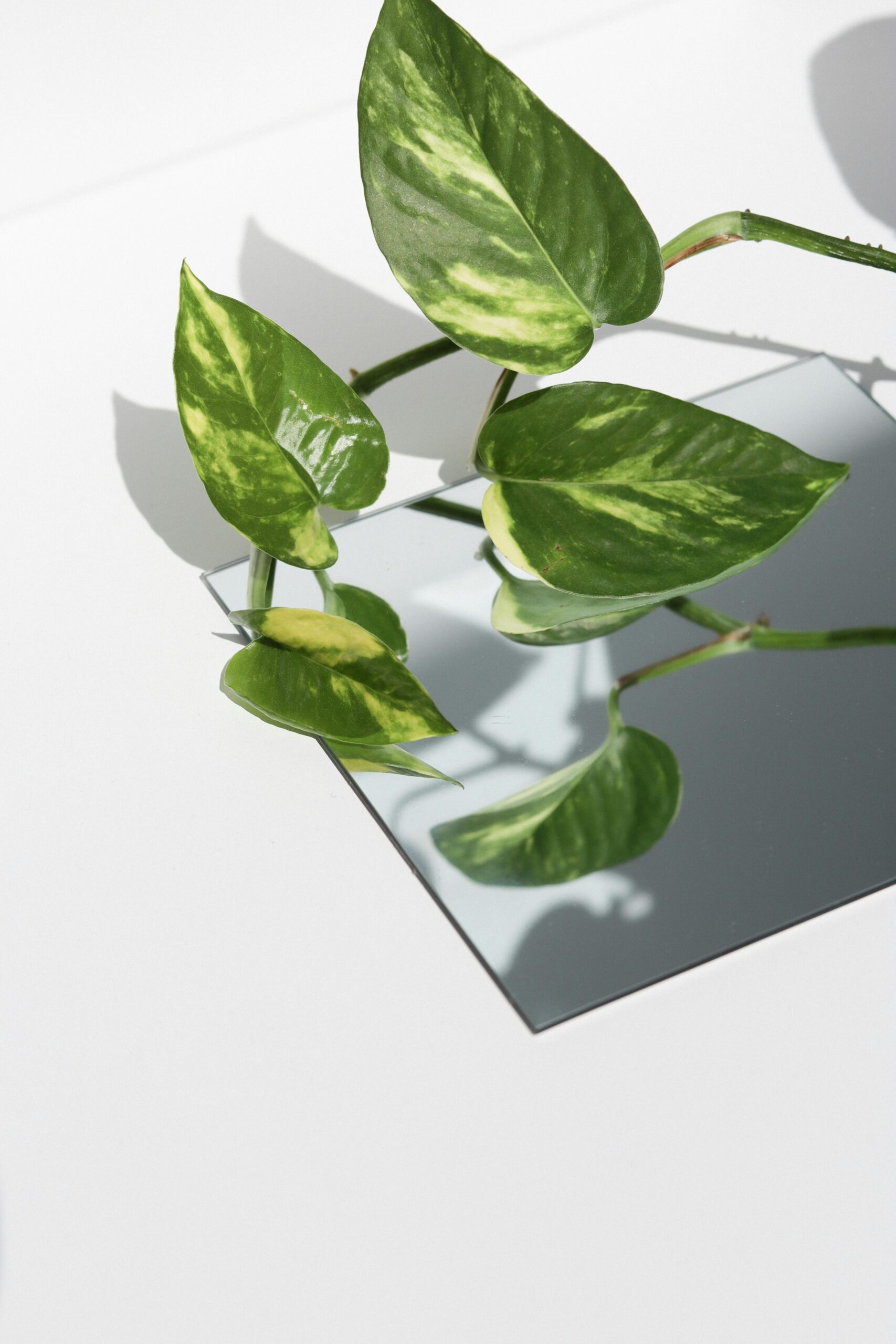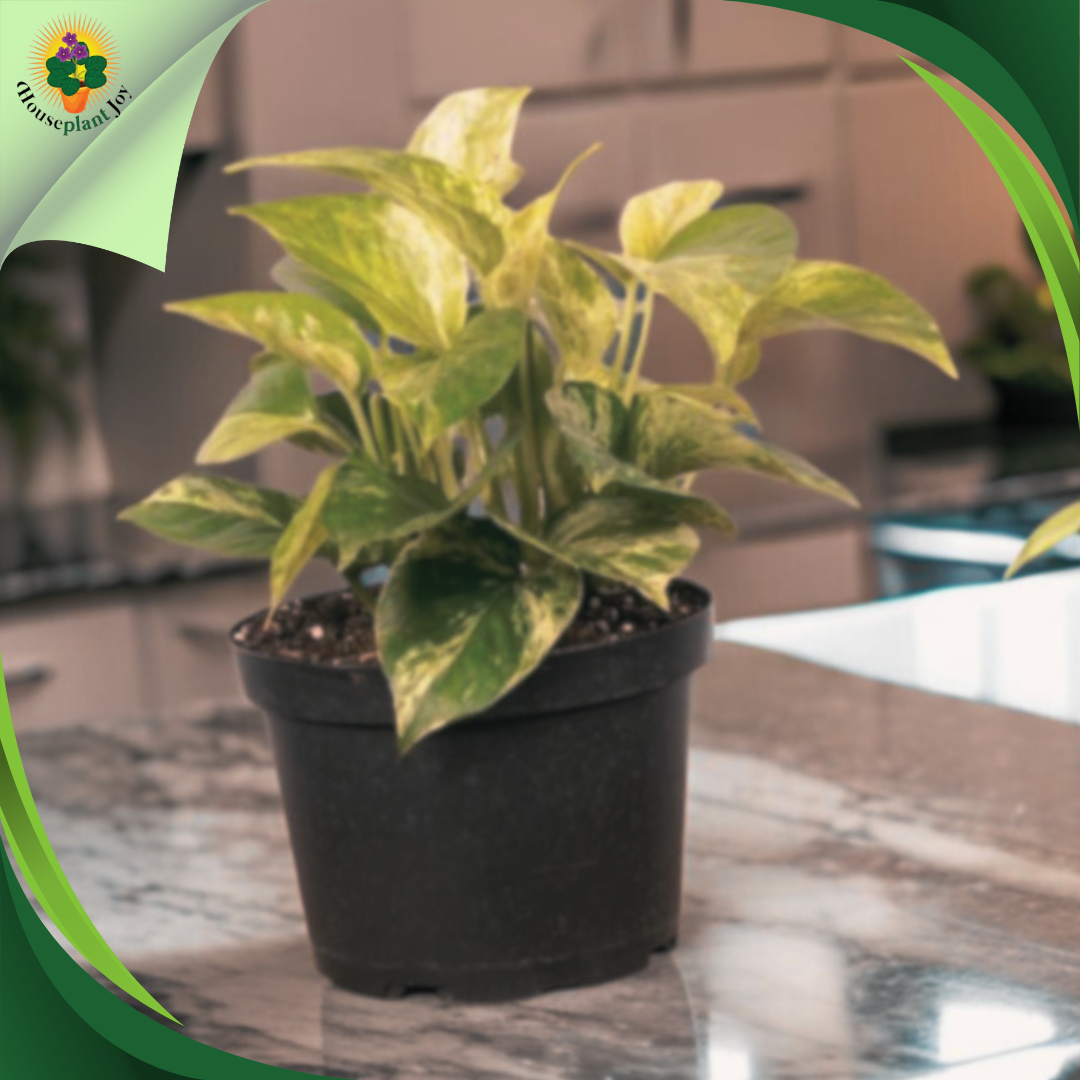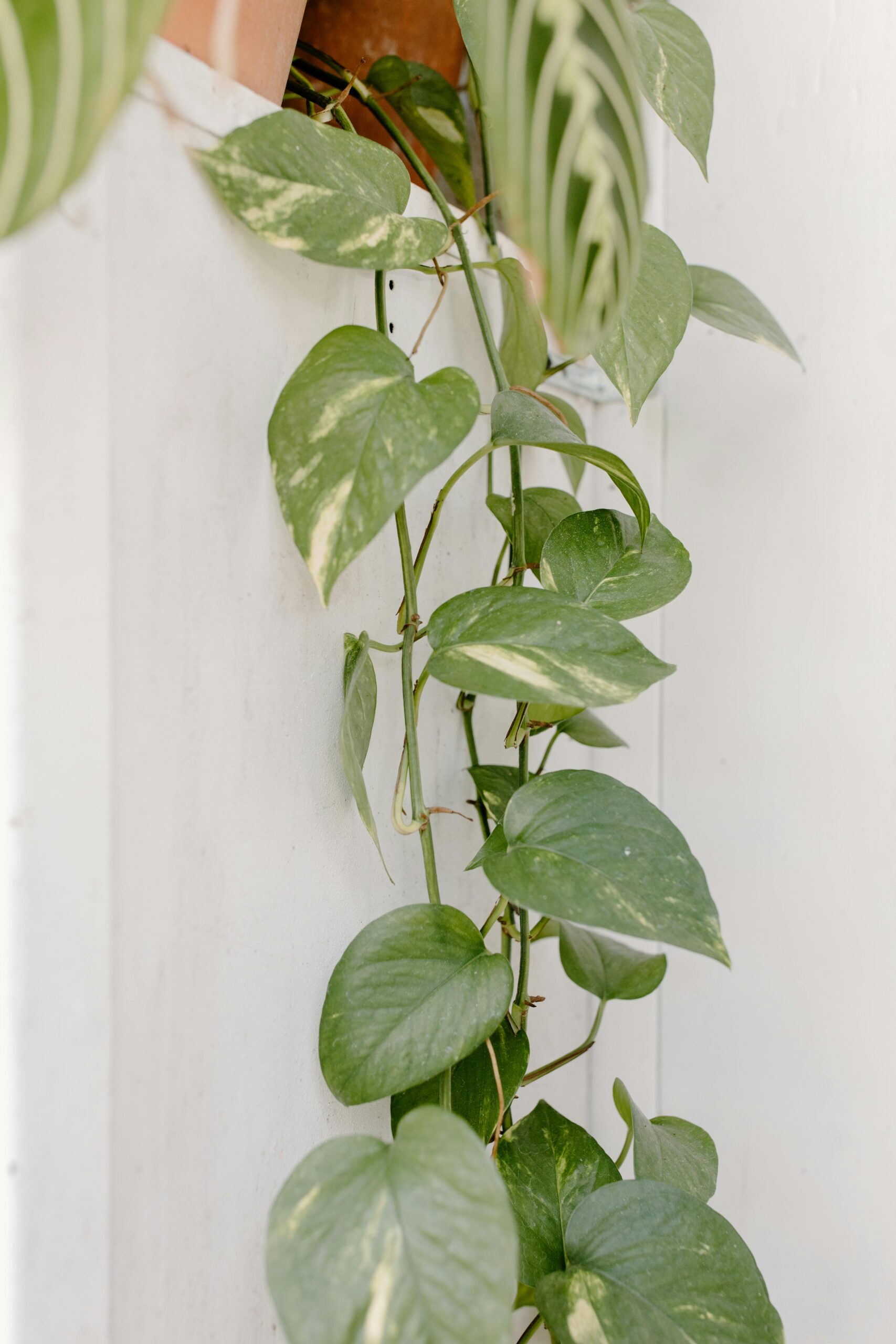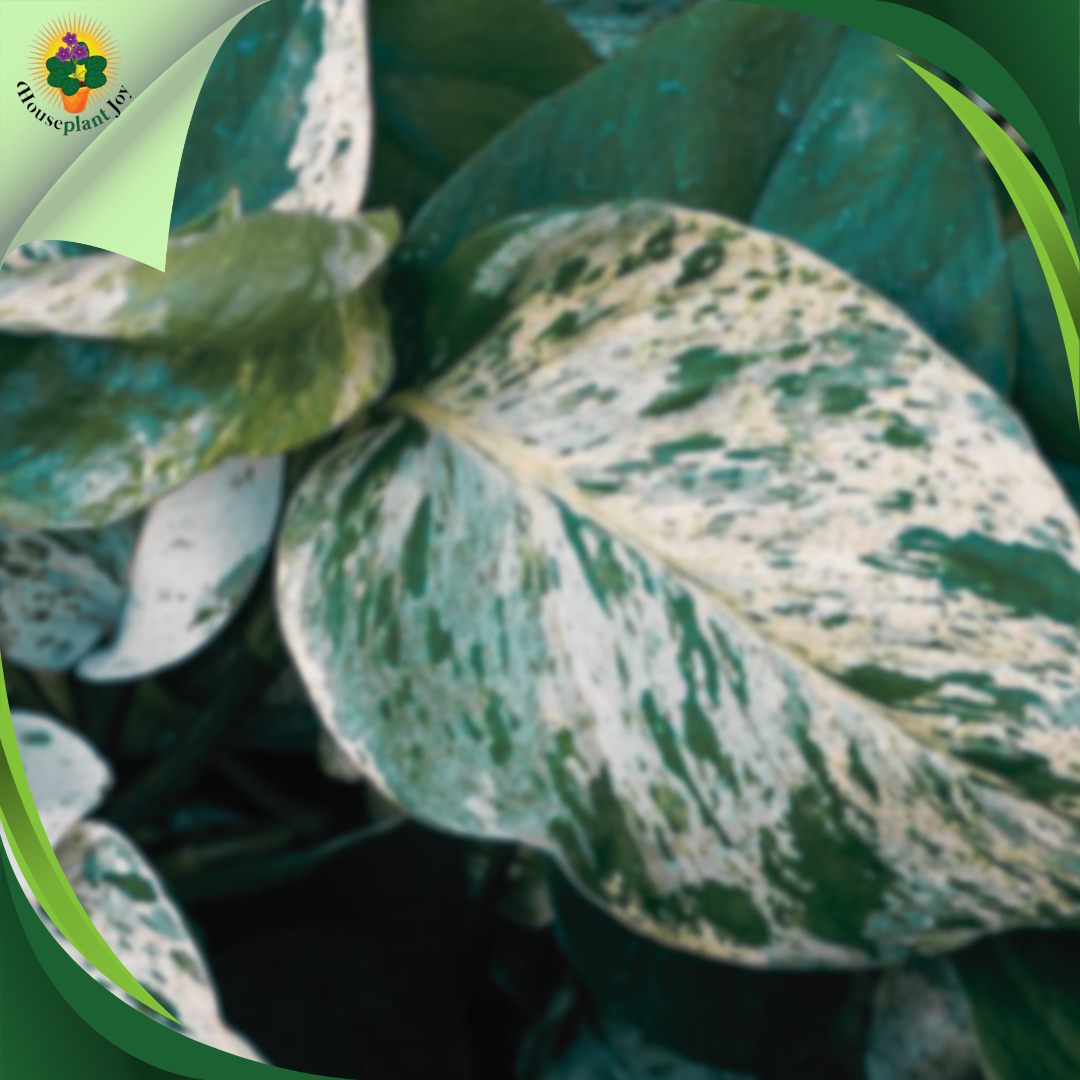HousePlantJoy is supported by our audience. When you purchase through one of our links, we may earn a small affiliate commission. As an Amazon Associate I earn from qualifying purchases. Your cost is not affected.
==================
Marble Queen Pothos – Vibrant and easygoing, this houseplant isn’t just beautiful, it’s practically begging to be brought home. With its stunning marbled leaves and forgiving nature, the Marble Queen Pothos is a perfect choice for anyone looking to add a touch of life to their indoor space. But beyond its good looks, this tropical vine boasts a surprising number of benefits. Dive deeper and discover why the Marble Queen Pothos might just be the perfect plant for you, even if you’re a complete novice plant parent.
Marble Queen Pothos Houseplants: Care Tips and Essential Growth Factors
If you’re looking for a houseplant that’s both stunning and easy to care for, the Marble Queen Pothos is an excellent choice. Known for its attractive, marbled leaves and hardy nature, this plant can thrive in various indoor environments.
With its low-maintenance needs and air-purifying qualities, the Marble Queen Pothos is perfect for both novice and experienced plant enthusiasts.
Caring for a Marble Queen Pothos involves providing the right amount of light and water. This plant prefers bright, indirect light but can also tolerate low-light conditions. Watering is simple: allow the top inch of soil to dry out before watering again. Be cautious not to overwater, as this can lead to issues like root rot.
Addressing common problems such as browning or yellowing leaves is vital to maintaining a healthy Marble Queen Pothos. These issues often stem from improper watering, lighting, or over-fertilizing. Regularly checking its environment will help ensure your plant stays vibrant and healthy.
Overview of Marble Queen Pothos
The Marble Queen Pothos, a beloved variety of the Epipremnum aureum family, is celebrated for its stunning green and white variegated leaves. Renowned for its ease of care and adaptability, this plant thrives in various indoor environments, making it a top choice among houseplant enthusiasts. Whether you’re a seasoned plant parent or a beginner, the Marble Queen Pothos will add a touch of elegance and lush greenery to your home.
Species Background
The Marble Queen Pothos, a captivating variety of Epipremnum aureum, hails from the Solomon Islands in the South Pacific. In its natural habitat, it thrives as a climbing vine, often reaching impressive lengths as it scales trees and other surfaces.
Indoors, this adaptable plant can be seen gracefully climbing poles or cascading down from hanging baskets, adding a natural elegance to any space. Despite its tropical origins, the Marble Queen Pothos can flourish in various household conditions, making it a versatile and low-maintenance choice for plant enthusiasts of all levels.
Distinctive Variegation
One of the main attractions of the Marble Queen Pothos is its stunning variegated leaves, which feature a striking blend of green with white or cream-colored patches. This unique patterning occurs naturally, ensuring that no two leaves are exactly alike, adding a distinctive touch to each plant.
The beautiful variegation adds visual interest and brightens up any indoor space, making it a popular choice for enhancing home decor. To maintain its vibrant coloration, placing the plant in bright, indirect light is crucial. Insufficient light can cause the variegation to fade, diminishing the plant’s aesthetic appeal. You can ensure your Marble Queen Pothos remains a stunning centerpiece in your indoor garden by providing the right lighting conditions.
Popularity and Availability
The Marble Queen Pothos is highly popular due to its low maintenance and striking appearance, making it a favorite among plant enthusiasts. It is readily available at most garden centers and online plant shops, and this versatile plant is suitable for both beginners and experienced gardeners.
Its ability to thrive in various conditions and attractive variegated foliage makes it a common choice for homes and offices. Whether you allow it to trail elegantly from a hanging basket or climb up support, the Marble Queen Pothos will be a delightful and eye-catching addition to your plant collection.
Planting and Propagation
Planting a Marble Queen Pothos requires well-draining soil and proper potting techniques to ensure healthy growth. Use a high-quality potting mix that retains moisture while allowing excess water to drain away, preventing root rot.
Propagation is straightforward and can be done using stem cuttings. Simply cut a healthy vine below a node, ensuring each cutting has a few leaves. These cuttings can be placed in water until roots develop or directly planted in a potting mix. Either method will yield new plants with the same striking variegation as the parent, making it easy to expand your collection or share with friends.
Soil Requirements
To ensure healthy growth, plant your Marble Queen Pothos in well-draining soil that retains some moisture. A good mix of peat-based soil combined with perlite offers the right balance by allowing adequate drainage while keeping the roots hydrated.
Alternatively, you can use general-purpose potting soil, but enhancing it with sand or orchid bark will further improve drainage. Avoid heavy soils that retain too much water, as this can lead to root rot.
Also, ensure your pot has drainage holes to prevent water from accumulating at the bottom. Proper drainage is crucial to maintaining the health of your Marble Queen Pothos and preventing waterlogged roots.
Propagation Techniques
Propagating Marble Queen Pothos is simple and can be done using stem cuttings.
- Choose a Healthy Stem: Select a long, healthy stem with at least two nodes.
- Cutting the Stem: Cut about a quarter-inch below a node using clean scissors.
- Remove Lower Leaves: Strip off the leaves from the bottom of the cutting to expose the node.
- Water Propagation: Place the cutting in a jar of water, ensuring the node is submerged. Wait until roots form.
- Potting Mix: Alternatively, stick the cutting directly into the potting mix and keep the soil moist.
Both methods are effective, but water propagation can be more straightforward for monitoring root growth.
Potting and Repotting
When potting your Marble Queen Pothos, choosing a pot with drainage holes is essential to prevent water from accumulating and causing root rot. Start with a smaller pot to avoid excess soil, which can retain too much water and hinder the plant’s growth.
As your Marble Queen Pothos grows, you may need to repot it into a larger container. Signs that indicate it’s time to repot include roots growing out of the drainage holes or the plant becoming root-bound, which can restrict its growth.
To repot, gently remove the plant from its current pot, shake off the excess soil, and place it in a slightly larger pot filled with fresh, well-draining soil. It’s generally a good practice to repot every 1-2 years to refresh the soil and give the roots more space to grow. This routine care will help keep your Marble Queen Pothos healthy and thriving.
Watering Guidelines
Marble Queen Pothos thrives with consistently moist soil but is sensitive to waterlogging, so it’s crucial to manage watering carefully. Water your plant when the top inch of the soil feels dry to the touch, ensuring the soil is evenly moist but not soggy. Overwatering can cause root rot, so avoiding letting the soil stay excessively wet is essential.
To prevent water buildup, always use pots with drainage holes and empty the saucer after watering. This prevents the roots from sitting in standing water, which can lead to root rot over time. Using room temperature water is ideal to avoid shocking the plant. During the winter months, when growth slows down, watering frequency is reduced, allowing the top layer of soil to dry out slightly between waterings.
Maintaining these watering practices will help your Marble Queen Pothos thrive and remain healthy throughout the year.
Sunlight and Placement
To ensure optimal growth of your Marble Queen Pothos, place it in bright, indirect sunlight. Direct sunlight can scorch its leaves, so positioning it near an east or north-facing window is ideal, where it can receive gentle, indirect sunlight.
If you notice the variegated leaves starting to lose their vibrancy, it may be a sign that the plant needs more light. Avoid keeping the plant in low-light areas for extended periods, as this can stunt its growth and diminish its aesthetic appeal.
If natural light is inadequate, you can supplement with fluorescent or LED grow lights placed a few feet above the plant. These lights provide the necessary spectrum for photosynthesis without the risk of sunburning the leaves, ensuring your Marble Queen Pothos remains healthy and beautifully variegated.
Pruning and Training
Regular pruning is essential for maintaining the shape and promoting the healthy growth of your Marble Queen Pothos. Use clean, sharp scissors or pruning shears to trim any leggy or yellowing stems. When pruning, make your cuts just above a leaf node to encourage new growth from that point.
If you prefer your Pothos to climb, you can train it by providing stakes or a trellis. Gently tie the vines to the support structure using soft plant ties, ensuring that they do not damage the stems.
Beyond shaping and training, regular pruning also allows the propagation of new plants from cuttings. Place the cuttings in water or directly into moist potting soil to root, quickly expanding your indoor garden.
Incorporating these pruning techniques into your care routine will help your Marble Queen Pothos thrive, maintain its lush appearance, and create a more vibrant indoor environment.
Growth and Development
The Marble Queen Pothos is a resilient and low-maintenance houseplant prized for its ability to flourish with minimal attention. Understanding its growth rate, typical patterns, and signs of health is vital to keeping it thriving in your home.
Average Growth Rate
The Marble Queen Pothos grows moderately, typically adding several inches to its length each year under ideal conditions. Maintaining a constant temperature of around 70°F (21°C) is ideal for encouraging steady growth throughout the year. The growth rate of your Marble Queen Pothos can vary based on factors such as light and humidity levels. Bright, indirect light and higher humidity levels promote faster growth and more vibrant foliage.
To support healthy growth, consider feeding your Marble Queen Pothos with a balanced liquid fertilizer diluted to half strength once a month during the growing season (spring and summer). This provides essential nutrients without overwhelming the plant.
Be cautious not to over-fertilize, as this can harm the plant. Stick to the recommended once-a-month feeding schedule to maintain your Marble Queen Pothos’ optimal growth and overall health. Adjust fertilizer applications during the fall and winter when growth naturally slows down.
Common Growth Patterns
Marble Queen Pothos typically exhibits a bushy growth pattern with vines that can trail or climb, reaching several feet in length over time.
Regular pruning is essential to maintain its shape and promote a fuller appearance. Trim back long vines using clean, sharp scissors or pruning shears. Make cuts just above a leaf node to encourage new growth at those points, which helps maintain the plant’s “bushiness”.
If left unpruned, the Marble Queen Pothos tends to grow more as a trailing or climbing plant. You can enhance its appearance by training it to climb a stake or trellis, creating an attractive vertical display in your home.
By incorporating these pruning and training techniques into your care routine, you can ensure that your Marble Queen Pothos remains healthy, bushy, and visually appealing as it continues to grow and thrive indoors.
Recognizing Healthy Plants
Healthy Marble Queen Pothos plants showcase vibrant leaves adorned with green and white variegation. When assessing its health, look for firm, lush leaves free from any spots or discoloration.
Regularly inspect the underside of the leaves for signs of pests, such as spider mites or mealybugs, which can affect the plant’s health if left unchecked.
A robust root system is another indicator of a healthy Marble Queen Pothos. The roots should fill the pot but not be tightly bound (root-bound), which can restrict growth.
Maintaining slightly moist soil is crucial for optimal growth. Avoid letting the soil dry out completely between waterings, which can stress the plant. Conversely, ensure the pot has proper drainage to prevent waterlogging, which can lead to root rot.
If you notice the leaves turning yellow, it may indicate overwatering or inadequate drainage. Adjust your watering routine accordingly to maintain balanced soil moisture.
Healthy new growth is a positive sign that your Marble Queen Pothos is thriving in its environment. Monitor the overall leaf color to gauge its health and adjust care practices as needed to ensure continued vibrancy and growth.
Pest Management
Pests, like spider mites and mealybugs, can be a problem. These pests suck the sap from the plant, causing yellowing or curling leaves.
Inspect your plant regularly.
- Wipe the leaves with a soapy water solution.
- Use insecticidal soap or neem oil for a more thorough treatment.
- Isolate infected plants to prevent the spread.
Keeping the area around your plant clean and avoiding over-fertilization can also help prevent pest infestations.
Disease Prevention
Diseases, such as root rot and leaf spot, often result from overwatering or poor drainage.
Root rot, one of the most common issues, is usually due to waterlogged soil.
To prevent root rot:
- Ensure your pothos is in a pot with drainage holes.
- Water only when the top inch of soil is dry.
- Use well-draining soil mix.
For leaf spots:
- Remove affected leaves.
- Avoid getting the leaves wet when watering.
- Ensure good air circulation around the plant.
Signs of Stress and Solutions
Signs of stress in Marble Queen Pothos include yellowing leaves, browning leaf tips, and drooping stems. Yellow leaves often indicate watering issues. Adjust your watering schedule accordingly. Browning tips can be due to low humidity or too much fertilizer.
To fix this:
- Increase humidity by misting the plant or using a humidifier.
- Flush the soil to remove excess salts from fertilizers.
Drooping stems may be a sign of both underwatering and overwatering. Check the soil moisture and water appropriately.
Eco-Friendly Cultivation
Marble Queen Pothos is an eco-friendly choice for indoor gardening due to its easy cultivation with minimal resources.
To ensure optimal growth, plant your Marble Queen Pothos in well-aerated soil. Enhance soil aeration by incorporating sustainable materials such as coco coir or perlite, improving drainage and promoting healthier root development.
Alternatively, you can grow Marble Queen Pothos in water, eliminating the need for potting soil. This method reduces your carbon footprint by conserving resources and minimizing waste associated with traditional gardening practices.
Moreover, Pothos plants are known for their hardiness and low-maintenance nature. They thrive without frequent fertilizing or intensive pest control, reducing reliance on chemical treatments that can harm the environment.
By choosing Marble Queen Pothos for your indoor garden, you opt for a sustainable and environmentally friendly plant that enhances your living space with minimal ecological impact.
Impact on Indoor Air Quality
Marble Queen Pothos is known for improving indoor air quality by filtering out common toxins. This plant can absorb harmful substances like formaldehyde, benzene, and xylene through its leaves and root system, making your home healthier.
Optimal humidity levels ranging from 40% to 60% benefit Marble Queen Pothos and help maintain its luscious green leaves.
By keeping the air around it moist, this plant can reduce symptoms of dryness in the eyes, nose, and throat, providing a more comfortable living environment.
Companion Planting and Design
Choosing the right companion plants and incorporating them into your interior design can enhance the beauty and health of your Marble Queen Pothos. This section guides you in selecting complementary plants and gives tips for designing an indoor space.
Complementary Plants
The Marble Queen Pothos pairs well with several other houseplants.
Snake plants are a great choice due to their tall, straight leaves, which contrast beautifully with the trailing vines of the Pothos. Snake plants also thrive in similar lighting conditions, making them a practical companion.
Asparagus ferns are another excellent choice. Their feathery fronds provide a striking visual contrast to the thick, variegated leaves of the Marble Queen Pothos. The different textures make an eye-catching display, especially in larger rooms.
ZZ plants also work well alongside Marble Queen Pothos. Both plants are low-maintenance and can tolerate low light levels. The shiny, dark green leaves of the ZZ plant provide a rich backdrop for the lighter, variegated foliage of the Pothos.
Interior Design Tips
Consider placement for optimal aesthetics and plant health when arranging your Marble Queen Pothos and companion plants.
Hanging baskets are a great way to showcase the Pothos’s long, trailing vines. They can be placed at varying heights to create a tiered effect with other plants.
Using plant stands can also add dimension to your space. Place taller plants like snake plants on the floor and use stands to elevate smaller plants. This layered approach ensures all plants receive adequate light and highlights their features.
Groupings of plants can become focal points in any room. Combine the Marble Queen Pothos with plants of different heights, shapes, and textures to create a cohesive look. Ensure proper spacing to allow for growth and easy access for watering.
Related Pothos Varieties
The Marble Queen Pothos is one of several attractive pothos varieties. Another well-known variety is the Golden Pothos, which features vibrant green leaves with yellow variegation. It is similar to the Marble Queen but has a different color pattern.
Another option is the jade pothos. It boasts solid green leaves, making it less variegated but equally appealing. The Jade Pothos is known for its hardiness and classic look.
The Manjula Pothos stands out with its green and white variegated leaves with wavy edges. This variety, created in 2010, is noted for its unique leaf shape and striking appearance.
Comparison with Other Houseplants
Compared to other houseplants like the Philodendron Brasil, the Marble Queen Pothos has more pronounced variegation. The Philodendron Brasil has green leaves with lime-green streaks but lacks the creamy white found in Marble Queen’s leaves.
The Snake Plant (Sansevieria) differs significantly. Its upright, rigid leaves, often striped, offer a different aesthetic.
Another contrast is seen with the Spider Plant. Spider Plants have long, arching leaves with a green center and white edges. They tend to grow in clusters, unlike the trailing habit of the Marble Queen.
The Peace Lily is another commonly compared plant. Its dark green leaves and white spathes provide a more formal look. Compared to the more forgiving Marble Queen Pothos, Peace Lilies require more specific care, particularly regarding light and water.
Marble Queen Pothos: A Low-Maintenance Beauty for Your Home
In this article, we’ve explored the many reasons why the Marble Queen Pothos is such a beloved houseplant. We covered its stunning variegated foliage, its ease of care, its air-purifying properties, and even how to propagate new plants to expand your collection.
From its ideal light and watering needs to troubleshoot common issues, we’ve aimed to provide you with a comprehensive guide to caring for your Marble Queen Pothos.
Thank you for reading! Do you have any personal experiences or tips to share about caring for Marble Queen Pothos? We’d love to hear from you in the comments below. Perhaps you have creative ways to display this plant in your home? Share your photos and inspire other plant enthusiasts!
How can I propagate a Marble Queen Pothos?
To propagate a Marble Queen Pothos, take a 4-6 inch stem cutting with at least two nodes and healthy leaves. Cut just below a node and remove the lowest leaves. You can put the cutting in water to root it.
What is the scientific name of Marble Queen Pothos?
The scientific name of Marble Queen Pothos is Epipremnum aureum ‘Marble Queen’. It belongs to the same species as other common pothos varieties.
What are the benefits of having a Marble Queen Pothos indoors?
Marble Queen Pothos purifies the air by removing toxins. Its variegated green and cream leaves add a touch of beauty. This plant requires minimal maintenance, making it suitable for busy individuals.
What are the optimum lighting conditions for a Marble Queen Pothos?
Marble Queen Pothos thrives in bright, indirect light. It can tolerate low light but may lose some of its variegation. Avoid direct sunlight to prevent leaf burn.
How do I determine the appropriate watering schedule for my Marble Queen Pothos?
Water your Marble Queen Pothos when the top 1-2 inches of soil are dry. Overwatering can lead to root rot, while underwatering may cause leaf browning. Ensure the pot has proper drainage.
What is the difference between Marble Queen Pothos and Golden Pothos?
Marble Queen Pothos has variegated green and cream leaves, while Golden Pothos features green leaves with yellow variegation. Both are low-maintenance but have slightly different visual appearances.




